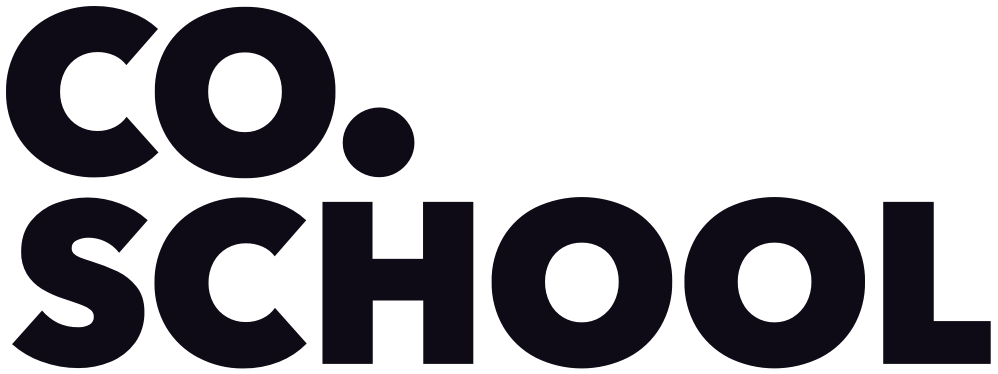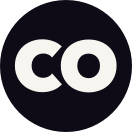Thanks for the great start!
— Kevan & Mark (your facilitators)
1. Can you offer us some feedback?
2. Download the resources from today's session
Keep the journey going
Any journey of change, innovation and co-creation requires self-awareness and team strength. To support organizations making the shift to become more people-centric, Crewjoy and Co.school are collaboratively developing products and experiences to help teams transform. Curious how your crew might become be more joyful, empathetic and connected? Follow along to stay connected with what's developing.
The questions you asked
1. How do you handle too many different problems emerging in the problem divergence space?
Mark shared in the session: encourage folks that the gathering of perspectives is intentional, part of a process, and that soon the time will come to converge.
Kevan shared, work on recognizing your own symptoms of anxiety and unease, and tune in to what you need in order to stay anchored, and trust the process.
Kevan shared, work on recognizing your own symptoms of anxiety and unease, and tune in to what you need in order to stay anchored, and trust the process.
2. What is the best product and/or service you have seen developed using Design Thinking?
Kevan shared the story of the District of North Vancouver expanding their vision of what it means to make "more accessible town halls," which led to the engagement of citizen engagement tool Civil Space.
Mark shared how a design thinking process led a team to focus instead on improving a service, not creating a product — a "counter-terrorism" design thinking effort.
Mark shared how a design thinking process led a team to focus instead on improving a service, not creating a product — a "counter-terrorism" design thinking effort.
3. Are there approaches to help the business stay engaged in the approach and not losing interest halfway through?
We shared the perspective that with meaningful participation and involvement, participants are uniquely motivated to "keep going." We also encouraged you that it doesn't have to be long and drawn out: you can condense, adapt, design the process to suit your realities.
4. How do you navigate change management in the Solution/Develop phase when it requires change in existing processes?
Folks are known to be less resistant to change when they have been involved in co-creating the actual solution. Therefore, following a design thinking process means that at least a subset of folks will have an increased level of readiness and commitment.
If a new idea requires a change in an existing process, why not treat it as part of the learning? "Our team came up with a new idea, but it would mean making a change to an existing process. Can we interest you in becoming involved in test-driving this new approach to help us decide if it should indeed be implemented?" Intentional involvement helps you learn, and smooths the road to change.
If a new idea requires a change in an existing process, why not treat it as part of the learning? "Our team came up with a new idea, but it would mean making a change to an existing process. Can we interest you in becoming involved in test-driving this new approach to help us decide if it should indeed be implemented?" Intentional involvement helps you learn, and smooths the road to change.
5. Are there things that teams need to do to have a successful design thinking process?
Familiarization: Like a trip through a new city, it helps to have studied the map beforehand. It also helps to have been there once or twice, if you're planning a more complicated stay. Are there low-stakes way to introduce the design thinking process to folks, in smaller chunks, so they are aware and familiar with what it's like? If a design thinking process is important, and it happens to be most people's first time...see how you can ease people in with some education.
Facilitation: While a process can indeed be run by internal leaders, sometimes those very leaders are needed to offer subject matter expertise and involvement. An external facilitator can help maintain some objective distance, and let internal contributors participate meaningful without playing the dual-role of "host."
Fun: When you're experiencing something that is generative, creative, collaborative and new, what kind of working conditions help enable that frame of mind? Perhaps it's not the hum-drum of the day-to-day, the pressure of intense scrutiny, or the heavy yoke of obligation. As yourself how can you stand your solid ground and introduce some joy to your co-creation workflow.
Facilitation: While a process can indeed be run by internal leaders, sometimes those very leaders are needed to offer subject matter expertise and involvement. An external facilitator can help maintain some objective distance, and let internal contributors participate meaningful without playing the dual-role of "host."
Fun: When you're experiencing something that is generative, creative, collaborative and new, what kind of working conditions help enable that frame of mind? Perhaps it's not the hum-drum of the day-to-day, the pressure of intense scrutiny, or the heavy yoke of obligation. As yourself how can you stand your solid ground and introduce some joy to your co-creation workflow.
6. How can we minimize the number of meetings while still be cohesive?
Some digital tools help you create homebases for ongoing facilitated processes — one of our favourites is called Howspace. It's a platform that lets you create a place to gather input, synthesize perspectives, and host live or async workshops.
The Design Sprint method, popularized by Google Ventures, takes the entirety of a design thinking cycle and compresses it to four or five days.
Meetings aren't the magic of design thinking. It's the mindset. How are you listening to folks? Distilling input? Exploring new options? Getting people's feedback? A lot of that can take place in clever, asynchronous ways, where it's just YOU who happens to know it fits within a design-thinking framework.
But if you are hosting live, realtime gatherings to do the work (which is super powerful), just remain laser-focused on what you're actually trying to accomplish. Your purpose. Your purpose is the "invisible leader," and will be what coheres your work, even if there are large gaps between meetings.
The Design Sprint method, popularized by Google Ventures, takes the entirety of a design thinking cycle and compresses it to four or five days.
Meetings aren't the magic of design thinking. It's the mindset. How are you listening to folks? Distilling input? Exploring new options? Getting people's feedback? A lot of that can take place in clever, asynchronous ways, where it's just YOU who happens to know it fits within a design-thinking framework.
But if you are hosting live, realtime gatherings to do the work (which is super powerful), just remain laser-focused on what you're actually trying to accomplish. Your purpose. Your purpose is the "invisible leader," and will be what coheres your work, even if there are large gaps between meetings.



